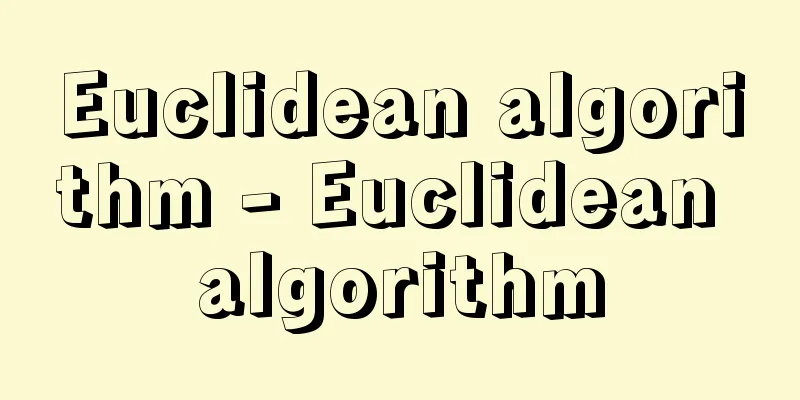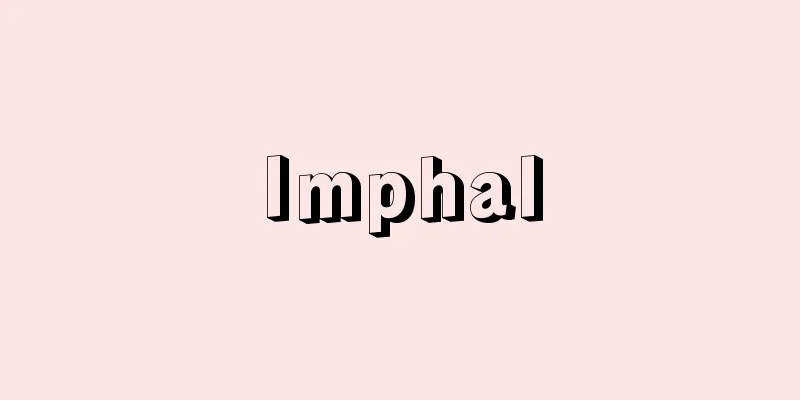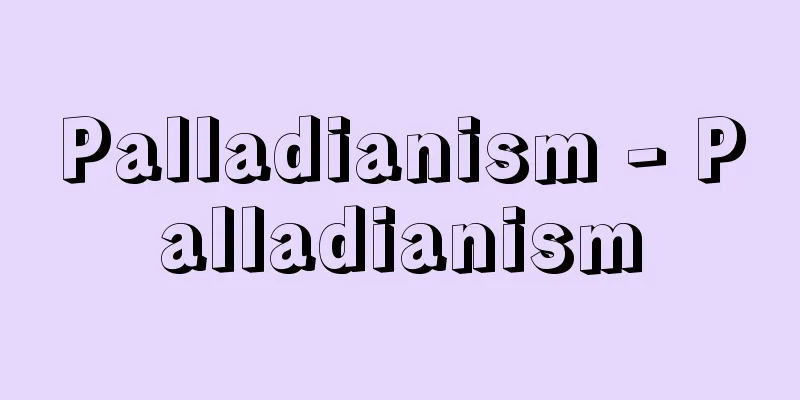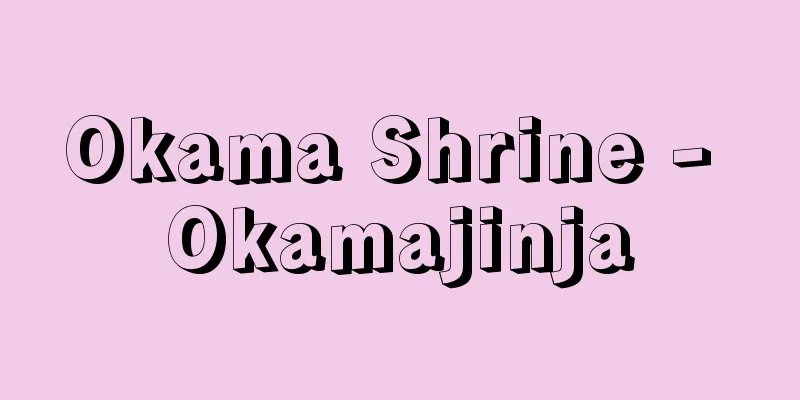Fish farming - Saibaigyogyo
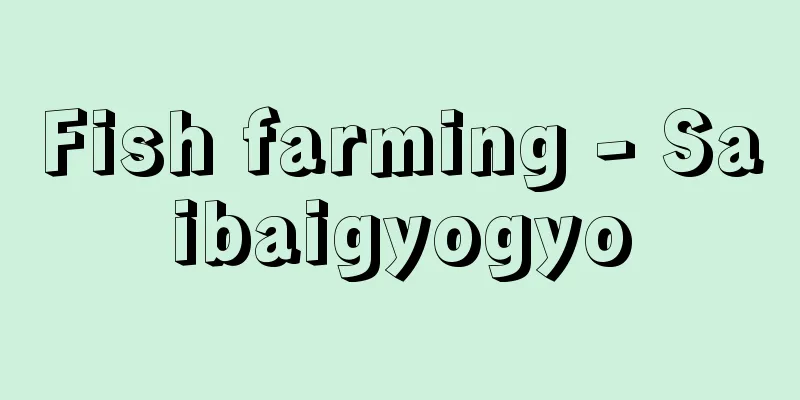
|
Unlike fisheries that only catch marine organisms, this is a system in which useful organisms are protected and cultivated in an artificial environment, then released back into the wild to utilize their productivity in order to increase catches. This term was coined in the mid-1950s from the perspective of fisheries administration. It applies agricultural cultivation techniques and methods used on land, mainly to marine organisms, and aims to artificially manage marine biological resources and achieve planned fishery production. It is also called "creative fisheries." [Yoshiaki Deguchi] Establishment and Transition of the National Fisheries Farming CenterAround 1962 (Showa 37), the annual catch volume of the Seto Inland Sea was 250,000 tons, and had not changed significantly over the past 10 years. However, the catch volume had been decreasing in high-priced fish such as red sea bream and Spanish mackerel, while low-priced fish such as anchovies and sand lances were increasing. Therefore, the following plan was made using the Seto Inland Sea as a model. [1] Increase in high-priced fish. [2] Introducing a circular reproduction process into fisheries. [3] Establishment of aquaculture centers. Of these, the business activities of the aquaculture center (3) were as follows: (1) Artificial incubation of important fish and shellfish, and capture, rearing, distribution and release of young fish. (2) Disseminating and raising awareness of knowledge regarding aquaculture and providing guidance to fishermen. (3) Technological development related to aquaculture. (4) Research and studies on the release project. To achieve these goals, the first national project sites were established in Yashima, Kagawa Prefecture, and Hakatajima, Ehime Prefecture, in 1962. The Seto Inland Sea Aquaculture Association, an incorporated association whose members consisted of 12 relevant prefectures and fisheries cooperative federations, was then established in 1963 to implement these projects. The success of the release project of shrimp and other fish in the Seto Inland Sea inspired other sea areas, and there was an increasing demand for the establishment of national aquaculture centers in various regions, which were established one after another from 1977 onwards. As aquaculture centers were established throughout the country, the Seto Inland Sea Aquaculture Association, which implemented the project, was reorganized as the Japan Aquaculture Association in 1979, becoming a national organization. In 2003, the Japan Aquaculture Association was dissolved and merged with the National Research Agency for Fisheries Science, and its centers were established in 16 locations, including Akkeshi, Hokkaido, Miyako, Iwate Prefecture, and Notojima, Ishikawa Prefecture. After that, organizational changes were made, such as the unification of the Fisheries Research Institute and Aquaculture Center within the National Research Agency for Fisheries Science, and national facilities with the name "Aquaculture Center" were abolished. Furthermore, in 2016, the National Research Agency for Fisheries Science was merged with the National Fisheries University to become the Fisheries Research and Education Agency. As of 2017, the Fisheries Research and Education Agency has nine research institutes and a development research center, which are engaged in the development of basic technologies related to aquaculture. The process of technological development in aquaculture generally follows the following sequence: (1) Selection of species. (2) Parent fish cultivation. (3) Seedling cultivation. (4) Intermediate rearing. (5) Stock addition (seedlings are reared and then released into the sea to increase the amount of fishery resources). (6) Rearing grounds. (7) Fishing ground management. (8) Harvesting and evaluation of results. [Yoshiaki Deguchi] Promotion by prefectures, municipalities, and fisheries associationsPrefectural aquaculture centers were established as institutions responsible for mass production of seedlings for release in each region, producing abalone, prawn, and blue crab seedlings for release, red sea bream, flounder, and black porgy seedlings for release experiments, and artificial seedlings for aquaculture. As the national aquaculture centers were integrated into the Fisheries Research Agency, the prefectural aquaculture centers were gradually integrated and remodeled into Fisheries Experimental Stations and Fisheries Technology Centers, but operations are still ongoing. In addition, intermediate cultivation and fishing ground management for scallops, abalone, sea urchins, prawns, blue crabs, red sea bream, and blue porgy are carried out by many municipalities and fishery cooperatives. [Yoshiaki Deguchi] "Kitada Shuichi, 'Fisheries Aquaculture and Statistical Model Analysis' (2001, Kyoritsu Publishing)" [Reference] | | |Source: Shogakukan Encyclopedia Nipponica About Encyclopedia Nipponica Information | Legend |
|
水産生物を漁獲するだけの漁業と異なり、有用な生物を人為的な環境下で保護・育成し、のちに自然に戻してその生産力を利用して漁獲の増大を図るシステムで、昭和30年代の中ごろに水産行政の立場からつくられた用語。陸上における農業の栽培技術・方法を主として海の生物に適用し、人為的に水産生物資源の管理を行い、計画的な漁業生産を目ざすもので、「つくる漁業」ともよばれる。 [出口吉昭] 国営栽培漁業センターの設置・変遷1962年(昭和37)ごろの瀬戸内海の年間漁獲量は25万トンで、過去10年間大きな変動がなかった。しかし、漁獲物はマダイ、サワラなどの高価格魚が減少し、カタクチイワシ、イカナゴなどの低価格魚が増加する傾向にあった。そこで瀬戸内海をモデルとして次のような構想がたてられた。 〔1〕高価格魚の増大。 〔2〕漁業に循環再生産過程を導入。 〔3〕栽培漁業センターの設置。 このうち、〔3〕の栽培漁業センターの事業内容は次のようなものであった。 (1)重要魚貝類の人工孵化(ふか)、稚魚の採捕、飼育、配布および放流。 (2)栽培漁業に関する知識の普及・啓発および漁業者の指導。 (3)栽培漁業に関する技術開発。 (4)放流事業に関する調査および研究。 これらの目標を達成するため1962年に国の事業場が香川県屋島(やしま)および愛媛県伯方島(はかたじま)に初めて設置された。その後、これらの事業を実施する機関として、関連する12府県および漁業協同組合連合会を会員とする社団法人瀬戸内海栽培漁業協会が1963年に発足した。 瀬戸内海におけるクルマエビなどの放流事業の成功はほかの海区を刺激し、各地で国の栽培漁業センター設置の要望が高まり、1977年度以降順次設置された。栽培漁業センターの事業場が全国に設置されるに伴い、事業実施機関の瀬戸内海栽培漁業協会は1979年に日本栽培漁業協会に改組され全国的な組織となった。2003年(平成15)日本栽培漁業協会は解散、独立行政法人水産総合研究センターに統合され、事業場は北海道厚岸(あっけし)、岩手県宮古(みやこ)、石川県能登島(のとじま)など16か所に設置された。その後、水産総合研究センター内の水産研究所と栽培漁業センターの一元化など組織改変が行われ、「栽培漁業センター」という名称の国の事業場はなくなった。さらに2016年、水産総合研究センターは独立行政法人水産大学校と統合し水産研究・教育機構となった。2017年時点で、水産研究・教育機構には9研究所および開発調査センターが置かれており、栽培漁業に関する基礎的な技術の開発などを行っている。 なお、栽培漁業における技術開発の過程は、おおむね次のような順序で行われている。 (1)種の選定。(2)親魚養成。(3)種苗育成。(4)中間育成。(5)資源添加(種苗を中間育成した後に海へ放流し、水産資源量を増大させる)。(6)育成漁場。(7)漁場管理。(8)収穫・効果判定。 [出口吉昭] 都道府県、市町村、漁協による推進各地域の放流種苗の大量生産を担う機関として、都道府県栽培漁業センターが置かれ、アワビ類、クルマエビ、ガザミの放流用種苗、マダイ、ヒラメ、クロダイの放流実験用種苗、養殖用人工種苗などの生産が行われていた。国の栽培漁業センターが水産総合研究センターに統合されるに伴い、都道府県の栽培漁業センターも水産試験場・水産技術センター等に徐々に統合・改変されたが、事業は継続・実行されている。また、ホタテガイ、アワビ、ウニ、クルマエビ、ガザミ、マダイ、ヒラメなどの中間育成や漁場管理などは、多くの市町村や漁業協同組合で行われている。 [出口吉昭] 『北田修一著『栽培漁業と統計モデル分析』(2001・共立出版)』 [参照項目] | | |出典 小学館 日本大百科全書(ニッポニカ)日本大百科全書(ニッポニカ)について 情報 | 凡例 |
Recommend
"September Night"
...In the 1950s, film directors from FAMU came to...
Meshed
...Population: 1,964,000 (1994). In Japan, it is ...
jam session
...Also, due to various restrictions and successi...
Cephalocaridae
…General term for crustaceans belonging to the Ce...
mot savant (English spelling) mot savant
… Finally, the majority of French vocabulary is d...
Aleksandr Al'fredovich Bek
1903‐72 Soviet novelist. He wrote reportage for Pr...
Aminta
…In this environment, Tasso wrote Treatise on Poe...
"The Perfect Marriage: A Study of Its Physiology and Technique" - Kanzennaru Kekkon
…While treating patients who were troubled or wor...
Prayer Book
…It is an offshoot of Irish, but the initial stat...
attacker shark
...A general term for sharks that harm and someti...
Bundesrat
...Their official names vary from country to coun...
Saint-Cyran
1581‐1643 French theologian. Born Jean Duvergier d...
Fluid inclusion - Fluid-cavity
Inclusions that contain liquid. They are microscop...
Afelandra Dania - Afelandra Dania
...An evergreen herbaceous shrub of the Acanthace...
inheritance tax
…On the other hand, the natural desire to leave a...

